- Home
- Paula Byrne
Perdita Page 2
Perdita Read online
Page 2
The Darby boys were extremely handsome, with auburn hair and blue eyes. Mary took after her father; she described her own childhood looks as ‘swarthy’, with enormous eyes set in a small, delicate face. She was a dreamy, melancholy, and pensive child who revelled in the gloominess of her surroundings in the minster. The children’s nursery was so close to the great aisle that the peal of the organ could be heard at morning and evening service. Mary would creep out of her nursery on her own and perch on the winding staircase to listen to the music: ‘I can at this moment recall to memory the sensations I then experienced, the tones that seemed to thrill through my heart, the longing which I felt to unite my feeble voice to the full anthem, and the awful though sublime impression which the church service never failed to make upon my feelings.’ Rather than playing on College Green with her brothers she would creep into the minster to sit beneath the lectern in the form of a great eagle that held up the huge Bible. The only person who could keep her away from her self-imposed exile there was the stern sexton and bell-ringer she named Black John, ‘from the colour of his beard and complexion’.8
As soon as she learnt to read, she recited the epitaphs and inscriptions on the tombstones and monuments. Before she was 7 years old, she had memorized several elegiac poems that were typical of the verse of the eighteenth century. Her taste in music was as mournful as her taste in poetry.
Mary confessed that the events of her life had been ‘more or less marked by the progressive evils of a too acute sensibility’. One thinks here of Jane Austen’s first published novel, Sense and Sensibility, with its satirical portrait of the ultra-sensitive Marianne Dashwood: she bears more than a passing resemblance to the melancholy young Mary Darby, quoting morbid poetry and thoroughly enjoying the misery of playing sombre music and being left in solitary contemplation. As a writer, Mary was always acutely aware of her audience: her image of herself in the Memoirs as a child of sensibility was designed to appeal to the numerous readers of Gothic novels and sentimental fiction. At the same time, her self-image appealed to the romantic myth of the writer as a natural genius who begins as a precociously talented but lonely child escaping into the world of imagination.
Though Mary presented herself as a ‘natural’ genius, she was the beneficiary of improvements in education and the growth of printed literature aimed at a young audience. This was a period when private schools for girls of middling rank sprang up all over England. Bristol was the home of Hannah More, playwright, novelist, Evangelical reformer, and political writer. Though Hannah became famous for rectitude and Mary for scandal, their lives were curiously parallel: born and bred in Bristol, each of them had a theatrical career that began under the patronage of David Garrick and each then turned to the art of the novel. In the 1790s they both became associated with contentious debates about women’s education.
Mary attended a school run by Hannah More and her sisters. An upmarket ladies’ academy, it had opened in 1758 in Trinity Street, behind the minster, just a few hundred yards from Mary’s birthplace. The curriculum concentrated on ‘French, Reading, Writing, Arithmetic, and Needlework’. A recruitment advertisement added that ‘A Dancing Master will properly attend.’9 The school was immensely popular and four years later moved to 43 Park Street, halfway up the hill towards the genteel district of Clifton. When Mary Darby attended, the enrolment had risen to sixty pupils. Each of the More sisters took responsibility for a different ‘department’ of the curriculum, with – in Mary’s words – ‘zeal, good sense and ability’. The earnest and erudite Hannah ‘divided her hours between the arduous task “of teaching the young ideas how to shoot,” and exemplifying by works of taste and fancy the powers of a mind already so cultivated’.10
In the summer of 1764 Bristol was in the grip of theatre mania. The famous London star William Powell played King Lear with a force said to rival that of the great Garrick himself. Within two years Powell was combining management with performance at a new building in the city centre. The first theatre in England to be built with a semicircular auditorium, it had nine dress boxes and eight upper side boxes, all inscribed with the names of renowned dramatists and literary figures.
The highlight of the first season in this new Theatre Royal was another King Lear, with Powell in the lead once again and his wife Elizabeth playing Cordelia. Powell had become very friendly with Hannah More, and she wrote an uplifting prologue for the performance. The whole school turned out for the play. It was the 8-year-old Mary Darby’s first visit to the theatre. She vividly remembered the ‘great actor’ of whom Chatterton said ‘No single part is thine, thou’rt all in all.’11 She was less taken by the performance of his wife who played Cordelia without ‘sufficient éclat to render the profession an object for her future exertions’.12 Among Mary’s school friends were Powell’s two daughters and the future actress Priscilla Hopkins, who would later become the wife of John Kemble and sister-in-law of Sarah Siddons, the most famous actress in Britain. The girls developed a passion for theatre together.
Hannah More continued to be fascinated by the theatre. She wrote a pastoral verse comedy called The Search after Happiness, which was acted by the schoolgirls. It advocates a doctrine of female modesty and submission that would be echoed in the anti-feminist tracts she wrote in later life. One of the characters is an ambitious girl who longs to ‘burst those female bonds, which held my sex in awe’ in order to pursue fame and fortune: ‘I sigh’d for fame, I languished for renown, / I would be prais’d, caress’d, admir’d, and known.’ It is tempting to see the young Mary Darby playing this part, and hearing her aspirations rebuked by another character: ‘Would she the privilege of Man invade? …/ For Woman shines but in her proper sphere.’13
By the end of the century Hannah More had turned herself into one of the most formidable conservative propagandists of the age. She deeply resented her connection with her old pupil, the infamous Perdita. That one of the most reviled women of the era was taught by one of the most revered was an irony not lost on the bluestocking Mrs Thrale: ‘Of all Biographical Anecdotes none ever struck me more forcibly than the one saying how Hannah More la Dévote was the person who educated fair Perdita la Pécheresse.’14 Mary, in turn, made it abundantly clear that her literary gifts owed little debt to Hannah and her sisters. She stressed that the education she received from the school was merely in feminine accomplishments of the sort that were required for the marriage market. Women were expected to be ornaments to society and, once married, to be modest and retiring creatures confined to the domestic sphere rather than competing with men in the public domain.
As the daughter of a prosperous merchant, Mary benefited from the privileges that could be bought by new money. The distinguished musician Edmund Broderip taught her music on an expensive Kirkman harpsichord bought by her father. The family moved to a larger, more elegant house as Nicholas Darby, keen to show off the fruits of his upward mobility, insisted upon living like a gentleman, buying expensive plate, sumptuous silk furniture, foreign wine, and luxurious food, displaying ‘that warm hospitality which is often the characteristic of a British merchant’.15 He ensured that his daughter lived in the best style. Her bed was of the richest crimson damask; her dresses, ordered from London, were of the finest cambric. The family spent the summer months on gentrified Clifton Hill in order to benefit from the clearer air. Darby’s appetite for ‘the good things of the world’ would be inherited by his daughter.
Mrs Darby, meanwhile, provided emotional security. Unlike many of the other girls at the More sisters’ school, Mary never boarded: she did not ‘pass a night of separation from the fondest of mothers’. In retrospect, she considered herself overindulged, suggesting that her mother’s only fault was ‘a too tender care’, a tendency to spoil and flatter her children: ‘the darlings of her bosom were dressed, waited on, watched, and indulged with a degree of fondness bordering on folly’.16 Given that Nicholas Darby was absent abroad for much of the time, it is not surprising that Hester threw so much into her children. Mary i
mplies that an absent father and an indulgent mother proved a dangerous combination for a headstrong girl like herself.
The Memoirs paints a picture of Mary’s early childhood as a fairy-tale existence, a paradise lost. Her life changed for ever, she says, when she was in her ninth year. Nicholas Darby had a lifelong history of travelling, fishing, and trading in the far north of Newfoundland. In the early 1760s he was acting as spokesman for the Society of Merchant Venturers, advising the Government on the defence of Newfoundland, which was a key strategic outpost fought over by the British and French during the Seven Years War. Then in 1765 he became obsessed with what Mary describes as an ‘eccentric’ plan, a scheme ‘as wild and romantic as it was perilous to hazard, which was no less than that of establishing a whale fishery on the coast of Labrador; and of civilizing the Esquimaux Indians, in order to employ them in the extensive undertaking’.17
This was dangerous territory. Not only was the weather extremely inclement, but the area in question – the Strait of Belle Isle – had only been held in British hands for a couple of years. But Darby had some powerful backers: Mary records that his scheme was given approval by the Governor of Newfoundland, Lord Chatham (William Pitt the Elder) and ‘several equally distinguished personages’. The venture seemed ‘full of promise’. Darby dreamed that the day might come when, thanks to him, British America could rival the whale industry of Greenland.
Having got permission from the Government, he told his family that the scheme would require his full-time residence in America for a minimum of two years. Hester was appalled by the idea. The northern wastes were no place for children, so accompanying her husband would have meant leaving her beloved sons and daughter to complete their education at boarding schools in England. She also had a phobia of the ocean. The decision to stay with her children would cost Hester her marriage. Nicholas duly sailed for America. The eldest boy John was placed in a mercantile house at Leghorn, whilst Mary, William, and George stayed with Hester in Bristol.
At first, Nicholas wrote regularly and affectionately. But his letters gradually became less frequent, and when they did arrive they began to seem dutiful and perfunctory. Then there was a long period of silence. And finally ‘the dreadful secret was unfolded’: Darby had acquired a mistress, Elenor, who, as Mary wryly testified, was only too happy to ‘brave the stormy ocean’ alongside him. She ‘consented to remain two years with him in the frozen wilds of America’.18
Darby had sailed from England to Chateau Bay with 150 men. He was then given headquarters on Cape Charles, where he constructed lodgings, a workshop, and a landing stage. Fishing began well, but then the local Inuit burned his boats and destroyed his crucial supply of salt. His men fought with each other and refused to winter on the coast. He made a second attempt a year later, in partnership with a fellow merchant, returning with new men and more sophisticated equipment. But more fighting ensued and in the summer of 1767 ten men were arrested on murder charges. Then in November, around the time of Mary’s tenth birthday, the Labrador project came to a violent end: another band of Inuit attacked a crew preparing for winter sealing, killed three men, burned Darby’s settlement, and set his boats adrift. Thousands of pounds’ worth of ships and equipment were destroyed. ‘The island of promise’ had turned into a ‘scene of barbarous desolation’ – though Mary’s account characteristically exaggerates the slaughter, turning the three casualties into the murder of ‘many of his people’.19 Darby’s patrons refused to honour their promise of financial protection and, with more losses incurred, he dissolved his partnership and set in train the sale of the family home.
Back in Bristol, Hester Darby faced a series of calamities: the shame that came with the news that her husband was residing in America with his mistress, the financial losses that would cost her everything, and the death – from smallpox or possibly measles – of Mary’s 6-year-old brother William. On his return to London, Nicholas lived with his mistress Elenor, but the manuscript of Mary’s Memoirs has an intriguing memorandum, excluded from the published text: ‘Esquemaux Indians brought over by my father, a woman and a boy.’20 Could this have been another mistress? And could it then be that Mary had an illegitimate half-Inuit half-brother?
Mary always felt torn between pride in her father’s achievements and resentment at his abandonment of the family. Her ambivalence can be seen in the way that she emphasizes his dual nationality. When she speaks of his bold and restless spirit, and his love of sea life, she ascribes this to his status as an American seafarer, yet at other times he is that stalwart of the community, a ‘British merchant’. Mary blamed her father’s mistress for bewitching his senses at a time when he was isolated in America, away from his wife and family. She herself learnt a valuable lesson at a particularly vulnerable age: loss of fortune and position swiftly loses friends. Dropped by the people who had been happy to take advantage of their former prosperity, the family were left bereft.
A year later, Hester, Mary, and the surviving younger son, George, were summoned to London to their father’s lodgings in fashionable Spring Gardens, near the famous Vauxhall pleasure gardens. Hester was unsure as to whether to expect ‘the freezing scorn, or the contrite glances, of either an estranged or repentant husband’.21 His ‘coldly civil’ letter had ‘requested particularly’ that she should bring the children with her: this ought to have been enough to make her realize that the meeting would be a farewell, not a reunion.
When they met, her father was in tears and could barely speak. The embrace he gave his wife was ‘cold’ – and it was the last she was to receive from him. Once the initial recriminations had blown over, Nicholas set out his plans. The children were to be placed at schools in London, while his wife was to board with a respectable clergyman’s family. He would be returning across the Atlantic. And, indeed, the following year he launched a new and much more successful venture in Labrador, this time employing experienced Canadian fishermen.
The next stage of Mary’s education was to be crucial to her vocation as a writer. She was sent to a school in Chelsea and came under the tuition of a brilliant and accomplished woman, Meribah Lorrington. Lorrington was highly unconventional in that she had been given a masculine education by her schoolteacher father, and was as well versed in the classics as she was in the modern languages, arithmetic, and astronomy. She was the living embodiment of a character type that Mary would fictionalize in several of her novels, the female who benefits from the education usually reserved for boys.
Mary worshipped her teacher, elevating her influence far above that of the More sisters: ‘All that I ever learned I acquired from this extraordinary woman.’22 The classical education she was given in Chelsea meant that in the long term her writings would demand a respect that was not often granted to female authors. There is an especially striking breadth of classical allusion in her feminist treatise A Letter to the Women of England, on the Injustice of Mental Subordination.
Pupil and teacher became close companions, even sharing the same bedroom. Mary dates her love for books from this relationship: ‘I applied rigidly to study, and acquired a taste for books, which has never, from that time, deserted me.’23 The women read to one another and Mary began composing verses, some of which were included in her first collection of poems, which she was to publish from debtors’ prison. In Mary’s narrative of her own life, her intellect first blossoms in an all-female community, with Meribah and half a dozen fellow pupils (among whom Mary is clearly singled out as the favourite). Far from aligning herself with the highly respectable Hannah More, she chooses to identify Lorrington as her mentor – and then goes on to reveal that she was an incorrigible drunkard.
Mary often complained of the contemptuous treatment that she received from her own sex, but she paid the utmost respect to the women who inspired and supported her, especially in her writing career. As Meribah Lorrington was credited for encouraging her juvenile writing, so Mary’s first literary patron was another woman of dubious reputation, Georgiana Duches
s of Devonshire. Mary adored both women, though Meribah was a hopeless alcoholic and Georgiana an equally addicted gambler.
Mary accepted the explanation that Meribah gave for her addiction to drink: she was grief-stricken by the death of her husband and was the victim of a bullying, disciplinarian father, a stern-speaking silver-bearded Anabaptist who wandered round the girls’ schoolroom wearing nothing but a loose flowing robe which made him look like a necromancer. Mary noticed that the presence of the father always made the daughter reach for the bottle.
Meribah Lorrington’s ‘state of confirmed intoxication’ even during teaching hours led to the demise of the Chelsea school. Some time later, Mary discovered a drunken beggar woman at dusk in the street. She gave her money, then, to her surprise, the woman said, ‘Sweet girl, you are still the angel I ever knew you.’ Their eyes met and Mary was horrified to discover that it was her old teacher. She took her home, gave her fresh clothes, and asked her where she lived. Meribah refused to say, but promised she would call again in a few days. She never did. Years later, Mary learned that her brilliant but flawed mentor had died a drunk in the Chelsea workhouse.
Mary describes herself in her Memoirs as well developed for her age, tall and slender. At the age of 10, she says, she looked 13. During her fourteen-month period boarding at the Lorrington Academy, she visited her mother every Sunday. One afternoon over tea she had a marriage proposal from a friend of her father’s. Hester was a little surprised; she asked her visitor how old he thought her daughter was. ‘About sixteen,’ he replied. Hester informed him that Mary was still only 12. He found this hard to believe, given that she was such a well-developed girl both physically and intellectually, but he was prepared to wait – he was a captain in the Navy, just off on a two-year voyage. He had great prospects for the future and hoped that Mary might still be unattached on his return. Just a few months later he perished at sea.

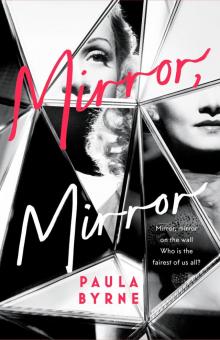 Mirror, Mirror
Mirror, Mirror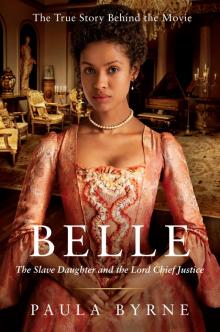 Belle
Belle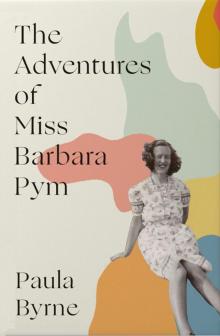 The Adventures of Miss Barbara Pym
The Adventures of Miss Barbara Pym The Real Jane Austen
The Real Jane Austen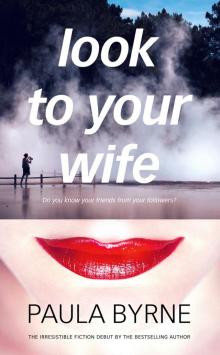 Look to Your Wife
Look to Your Wife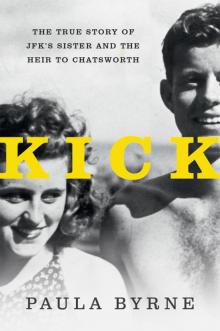 Kick
Kick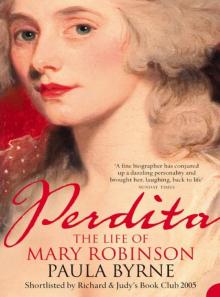 Perdita
Perdita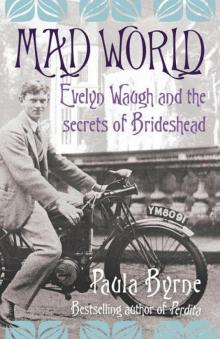 Mad World: Evelyn Waugh and the Secrets of Brideshead (TEXT ONLY)
Mad World: Evelyn Waugh and the Secrets of Brideshead (TEXT ONLY)